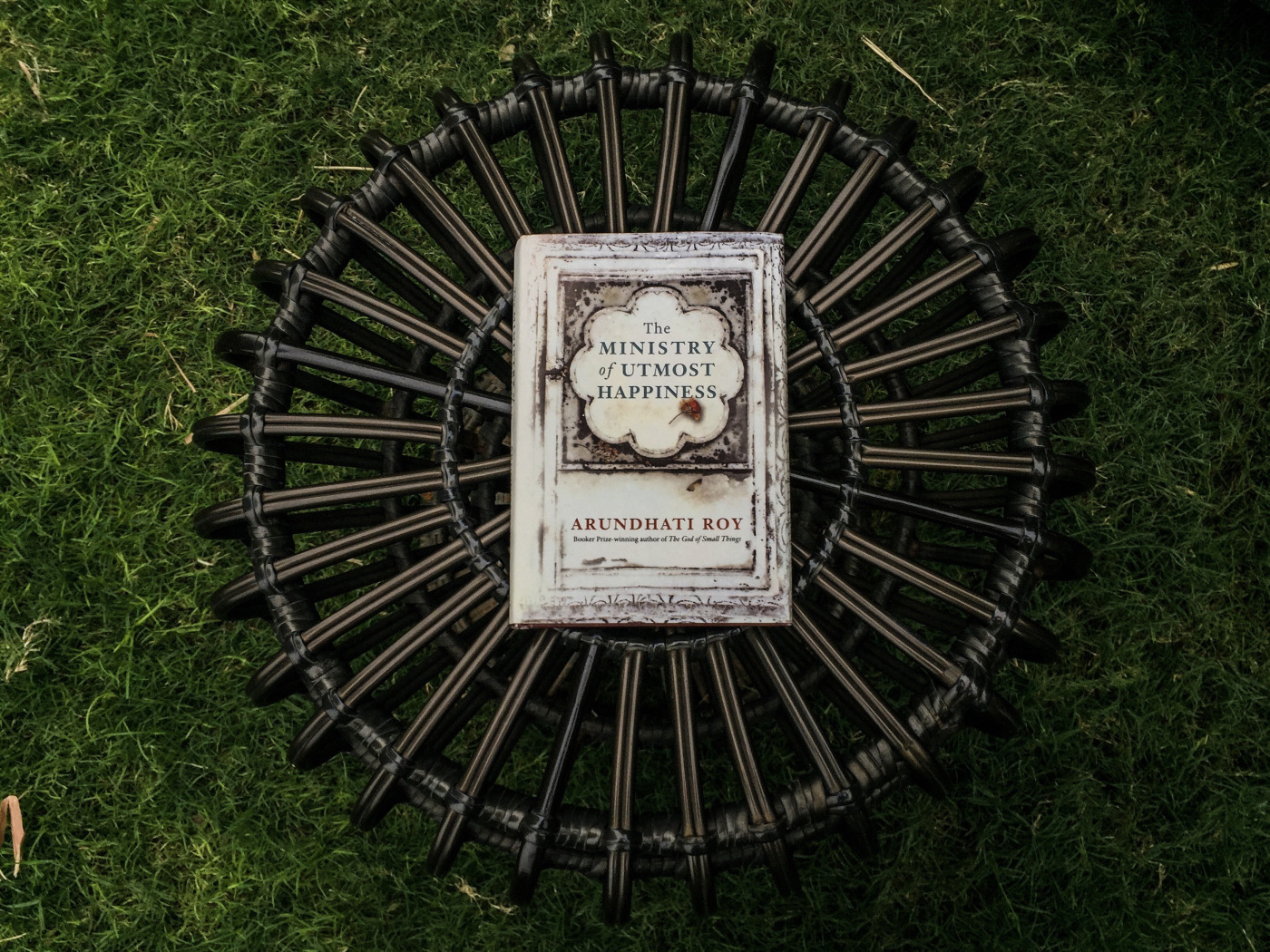The Ministry of Utmost Happiness,
Or
The Dungeon of Utmost Unhappiness?
This heavy tome of a book ain’t gonna make you happy.
But does that mean you should not read it?
No, that means you should jump headlong into it.
Get sucked by this dementor of a novel,
And arise with a mind that knows too much of everything.
It has been a month since I read Arundhati Roy’s new novel, and I have been dreading writing about it. How does one review a book like that? Filled with truth to the brim, so much so that every time you hold it, the truth seeps and weeps out of the pages and sadness fills your entire room. I have locked the book in a cupboard shelf, because I am afraid of falling into the depression that it induces every time I see its beautiful cover.
I am not comparing it to her first book, “The God of Small Things.” Why do we have to compare everything to everything. It’s like saying a second child of a mother is not as brilliant or beautiful as her first child. Comparisons are always unfair to a mother.
“The God of Small Things” was a book that showed me how beautiful and lyrical prose could be. It had a strange sadness about it that has stayed forever with me. The Ayemenem that Rahel and Esther grew up in was weaved like a background music in the poetry of the book.
“The Ministry of Utmost Happiness” does not have a steady background music, nor does it talk about characters that can stay with you after you have finished the book.
The book starts with the story of a mother who births a baby with both sex parts, Aftab. Aftab grows up into Anjum, a Hijra in the Khwabgah. I loved Anjum, only to lose Anjum midway into another story. Then comes S. Tilottama, a Malayali dusky architect who I was incapable of falling in love with. This is ironical as in the story, every man she is friends with falls in love with her insouciant character. I found her lacking depth and character in the book, except that she kept coming in my imagination as Arundhati Roy herself.
The myriad characters are thrown in the history of India, and it makes for a nice Sambhar curry, where none of the characters stand on their own as a dominant and memorable flavour.
You are savouring the history of old Delhi, its dying Urdu, until suddenly the kaleidoscope shifts and you find yourself in Kashmir where the truth begins to seep from the pages and suffocate you in the grim reality of the army dynamics in Kashmir. There are two babies involved, named Miss Jebeen the first, and the second respectively. Gujarat ka Lalla Modi, the silent PM, Gau Rakshaks, Arvind Kejriwal, Bhopal Gas tragedy, Maoist rebels in forests, the scope of the story is so huge it reminds you of everything that has gone wrong in India in the last 30 years or so.
Arundhati Roy, being the fearless writer that she is, has experimented a lot with the book too. Out of nowhere, she will tell you ultra-short stories in the form of diary clippings, that ask you the lesson of the story, mocking you about the unfairness that the character faces in the clipping. It goes on and on, until you are exhausted and helpless, because you can not help Kashmir just as you can no more control your own 100 rupee notes in India.
Not all is gloomy, because I came across some fine history that was hitherto unknown to me, like that of the Dargah of Sarmad Shahid in Jama Masjid, who was beheaded by Aurangjeb for reciting only the first line of the Kalima Taiyyab,
“La Ilaha”
(There is no God),
instead of the entire Kalima,
“La ilaha illa’llah Muhammadur-Rasoolu-llaah
(There is no God except Allah and Muhammad is the Messenger of Allah).
I suddenly found an admiration for Sarmad and his wits. There is ample poetry in the book, ranging from Urdu couplets to Osip Mandelstam. But the story itself lacks a rhythm of its own.
What the book lacks in its rhythm makes up for it to me with the appearance of Anjum and her coterie of friends, who are the soul of the story. Eventually, Tilottama too joins them and hopefully lives happily ever after in the graveyard of unconsoled souls.
I liked the book despite its occasional shortcomings, just like I love the India that Arundhati Roy talks about, despite its obvious failings.

Loved Your Post Seriously. This post makes me the clear lot of things. Please update more articles like this.
LikeLike